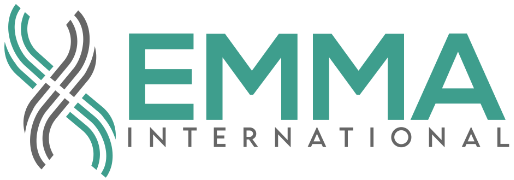The medical device industry is at the forefront of technological innovation, where software plays a critical role in device functionality, safety, and compliance. Selecting the appropriate programming language is essential to meet regulatory standards, ensure device reliability, and facilitate future updates. Here’s a look at some of the most common software languages used in medical device development and why they are favored in this highly regulated field.
1. C
C is one of the oldest and most widely used programming languages in embedded systems, including medical devices.
Why It’s Used:
- Efficiency: C provides low-level access to memory and hardware, making it highly efficient for resource-constrained environments.
- Control: It allows for precise control over system resources, which is crucial for real-time applications.
- Standards Compliance: Many regulatory standards and guidelines for medical devices reference C for safety-critical software development.
Use Cases:
Firmware for implantable devices like pacemakers.
Operating system kernels for medical imaging systems.
Drivers for medical equipment sensors.
2. C++
C++ is an extension of C that includes object-oriented features, making it suitable for more complex applications.
Why It’s Used:
- Object-Oriented Programming (OOP): Facilitates code reusability and modularity, which is beneficial for large-scale projects.
- Performance: Retains the efficiency of C while offering more advanced features.
- Flexibility: Suitable for both low-level hardware interaction and high-level application development.
Use Cases:
Software for diagnostic machines like MRI and CT scanners.
Control systems for robotic surgical instruments.
Data processing software in patient monitoring systems.
3. Python
Python is a high-level, interpreted language known for its readability and ease of use.
Why It’s Used:
- Rapid Prototyping: Allows for quick development and iteration of prototypes.
- Extensive Libraries: A vast ecosystem of libraries for data analysis, machine learning, and more.
- Integration: Can easily integrate with C/C++ for performance-critical components.
Use Cases:
Data analysis and visualization tools for medical research.
Machine learning algorithms for diagnostic support systems.
Scripting and automation tasks in medical software development.
4. Java
Java is a high-level, object-oriented language known for its portability and robustness.
Why It’s Used:
- Platform Independence: Write once, run anywhere capability is useful for cross-platform medical applications.
- Security: Built-in security features make it suitable for applications requiring high data protection.
- Scalability: Handles large-scale systems and applications effectively.
Use Cases:
Backend systems for telemedicine applications.
Patient management and record systems.
Mobile health apps for Android devices.
5. MATLAB
MATLAB is a high-level language and interactive environment for numerical computation, visualization, and programming.
Why It’s Used:
- Data Analysis: Strong capabilities for data analysis and visualization, essential for medical research and development.
- Prototyping: Ideal for algorithm development and testing.
- Toolboxes: Specialized toolboxes for biomedical signal processing, image processing, and more.
Use Cases:
Signal processing for ECG and EEG data analysis.
Image processing for medical imaging applications.
Development of control algorithms for medical devices.
6. Assembly Language
Assembly language is a low-level programming language that provides direct control over hardware.
Why It’s Used:
- Optimization: Offers the highest level of optimization for performance-critical applications.
- Hardware Control: Essential for interfacing directly with hardware components.
- Predictability: Allows for highly predictable execution times, crucial for real-time systems.
Use Cases:
Critical sections of firmware in life-supporting devices.
Performance-critical drivers and interrupt service routines.
Bootloaders for medical devices.
Choosing the right programming language for medical device software is a critical decision that impacts the device’s functionality, compliance, and longevity. C and C++ are staples for their efficiency and control, while Python and Java offer flexibility and rapid development capabilities. MATLAB is invaluable for data-intensive applications, and Assembly language provides unparalleled optimization for hardware interaction.
Each language has its strengths and ideal use cases, often necessitating a combination of languages to meet the diverse requirements of modern medical devices. As technology evolves, so will the languages and tools used to develop the next generation of life-saving medical devices.
EMMA International’s dedicated team of software engineers combines technical expertise and agile methodology with a deep understanding of regulatory requirements to deliver robust, scalable, and compliant software solutions. Ready to learn more about how we can support your team? Call us at 248-987-4497 or email info@emmainternational.com today.
FDA (Jan 2002) General Principles of Software Validation; Final Guidance for Industry and FDA Staff retrieved from: https://www.fda.gov/files/medical%20devices/published/General-Principles-of-Software-Validation—Final-Guidance-for-Industry-and-FDA-Staff.pdf






